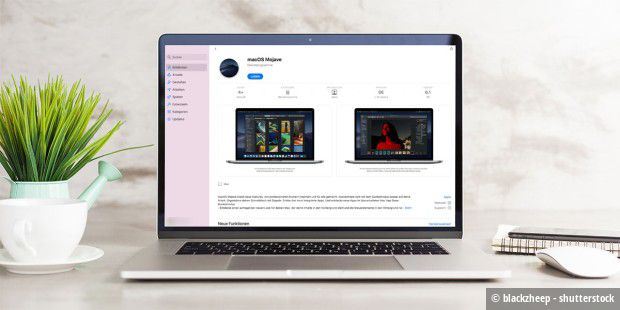- Download Catalina Installer App Store Windows 10
- Download Macos Catalina Installer App Store
- Download Catalina Installer Without App Store
- Download Catalina Installer Without App Store
Click the App Store icon. Click Purchases in the top menu. Scroll down to find the preferred OS X version. This method allows you to download Mavericks and Yosemite by logging with your Apple ID — only if you previously downloaded them from the Mac App Store. Part 2: Download a Copy of Bootable macOS Catalina Installer. There are two ways to download macOS Catalina 10.15. The most common way is via Mac App Store or you can use the third-party apps, which is a good alternative if the operation could not completed successful in App store. This happens a lot at least on my MacBook Pro. If the App Store says ‘Open’ then it is detecting a previous download of the install app. Go to the Applications folder locate Install macOS.app. Move it to the Trash, empty the Trash. Restart, click on the link again, the App Store should say ‘Get' or 'Download'.
Recently, I was needed a macOS Catalina installer to install it on an external SSD drive. In this article, I’ll show you how to download the “Install macOS Catalina.app” file from the Mac App Store. Let’s begin.
Preamble
If you are think about where you can download macOS, it is very easy as it is a regular application, like game, photo editor or notes, that we use every day. All apps for macOS we can find and download in App Store, including macOS Catalina itself. We can download macOS Catalina for free.
Download Catalina Installer App Store Windows 10
Let’s begin
Download a macOS Catalina from App Store is a really simple process. For this, we need to follow few simple steps. Now let’s get started :)

Go to Launchpad → App Store.

In the search bar on the left-hand side, enter macOS Catalina and press the Enter key.
Click on the VIEW button.
Then click the GET button or iCloud download icon.
Click on the Download button.
Note! It takes time to download the macOS Catalina installer app, so make sure that you have a reliable Internet connection. If you’re using a Mac notebook computer, plug it into AC power.
macOS Catalina download directly to our Applications folder as an app named Install macOS Catalina. If the installer app opens after downloading, quit it without continuing installation.
Note! If you have problems downloading the complete macOS Catalina installer app, then read this article, it should help.
Conclusion
That’s it, you’re done! Now you have the “macOS Catalina” installer app downloaded. So simple isn’t it?
I hope this article helped you to learn how to download a macOS Catalina installer app. If this article has helped you then please leave a comment
Thanks for reading!
Milena is a web designer and illustrator. She spends her time translating our articles and wrote her own articles. Her personal website can be found at milenakiseleva.com.
These advanced steps are primarily for system administrators and others who are familiar with the command line. You don't need a bootable installer to upgrade macOS or reinstall macOS, but it can be useful when you want to install on multiple computers without downloading the installer each time.
What you need to create a bootable installer
- A USB flash drive or other secondary volume formatted as Mac OS Extended, with at least 14GB of available storage
- A downloaded installer for macOS Big Sur, Catalina, Mojave, High Sierra, or El Capitan
Download macOS

- Download: macOS Big Sur, macOS Catalina, macOS Mojave, or macOS High Sierra
These download to your Applications folder as an app named Install macOS [version name]. If the installer opens after downloading, quit it without continuing installation. To get the correct installer, download from a Mac that is using macOS Sierra 10.12.5 or later, or El Capitan 10.11.6. Enterprise administrators, please download from Apple, not a locally hosted software-update server. - Download: OS X El Capitan
This downloads as a disk image named InstallMacOSX.dmg. On a Mac that is compatible with El Capitan, open the disk image and run the installer within, named InstallMacOSX.pkg. It installs an app named Install OS X El Capitan into your Applications folder. You will create the bootable installer from this app, not from the disk image or .pkg installer.
Use the 'createinstallmedia' command in Terminal
- Connect the USB flash drive or other volume that you're using for the bootable installer.
- Open Terminal, which is in the Utilities folder of your Applications folder.
- Type or paste one of the following commands in Terminal. These assume that the installer is in your Applications folder, and MyVolume is the name of the USB flash drive or other volume you're using. If it has a different name, replace
MyVolumein these commands with the name of your volume.
Big Sur:*
Catalina:*
Mojave:*
High Sierra:*
El Capitan:
* If your Mac is using macOS Sierra or earlier, include the --applicationpath argument and installer path, similar to the way this is done in the command for El Capitan.
After typing the command:
- Press Return to enter the command.
- When prompted, type your administrator password and press Return again. Terminal doesn't show any characters as you type your password.
- When prompted, type
Yto confirm that you want to erase the volume, then press Return. Terminal shows the progress as the volume is erased. - After the volume is erased, you may see an alert that Terminal would like to access files on a removable volume. Click OK to allow the copy to proceed.
- When Terminal says that it's done, the volume will have the same name as the installer you downloaded, such as Install macOS Big Sur. You can now quit Terminal and eject the volume.
Use the bootable installer
Determine whether you're using a Mac with Apple silicon, then follow the appropriate steps:
Apple silicon
- Plug the bootable installer into a Mac that is connected to the internet and compatible with the version of macOS you're installing.
- Turn on your Mac and continue to hold the power button until you see the startup options window, which shows your bootable volumes.
- Select the volume containing the bootable installer, then click Continue.
- When the macOS installer opens, follow the onscreen instructions.
Intel processor
- Plug the bootable installer into a Mac that is connected to the internet and compatible with the version of macOS you're installing.
- Press and hold the Option (Alt) ⌥ key immediately after turning on or restarting your Mac.
- Release the Option key when you see a dark screen showing your bootable volumes.
- Select the volume containing the bootable installer. Then click the up arrow or press Return.
If you can't start up from the bootable installer, make sure that the External Boot setting in Startup Security Utility is set to allow booting from external media. - Choose your language, if prompted.
- Select Install macOS (or Install OS X) from the Utilities window, then click Continue and follow the onscreen instructions.
Download Macos Catalina Installer App Store
Learn more
Download Catalina Installer Without App Store
A bootable installer doesn't download macOS from the internet, but it does require an internet connection to get firmware and other information specific to the Mac model.
Download Catalina Installer Without App Store
For information about the createinstallmedia command and the arguments you can use with it, make sure that the macOS installer is in your Applications folder, then enter the appropriate path in Terminal: